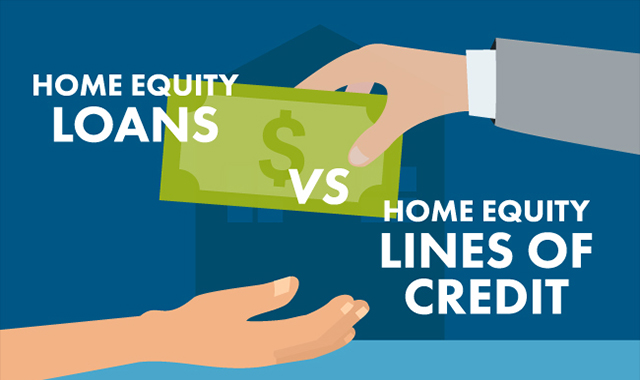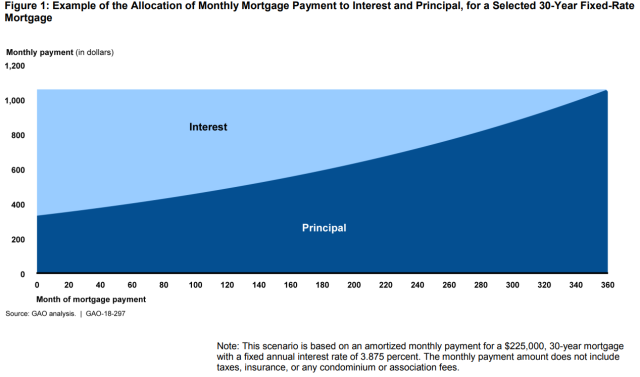How Equity Release Mortgages Can Release Tied-Up Capital
How Equity Release Mortgages Can Release Tied-Up Capital
Blog Article
Checking Out the Various Types of Equity Release Mortgages Available Today
Equity Release mortgages present different choices for property owners aged 55 and over. equity release mortgages. These monetary products satisfy different requirements and preferences, allowing people to accessibility funds from their residential property. From lifetime home mortgages to shared appreciation mortgages, each type provides distinctive benefits. Understanding these options is vital for making notified choices. What factors should one take into consideration when picking the most appropriate equity Release plan? The details that adhere to may shed light on this important subject
Comprehending Equity Release Mortgages
Equity Release mortgages offer homeowners, commonly those aged 55 and over, with a method to access the value tied up in their residential or commercial property without requiring to sell it. This financial choice enables individuals to convert a part of their home equity into cash money, which can be made use of for numerous objectives, such as home enhancements, paying off financial obligations, or funding retirement.Equity Release can take various forms, but it basically entails loaning versus the value of the home while keeping ownership. Property owners can select to obtain a round figure or a collection of smaller sized repayments, relying on their financial needs and preferences.Additionally, the amount available for Release is affected by the residential property's value, the homeowner's age, and specific lending institution criteria. On the whole, recognizing equity Release home loans is essential for house owners to make informed decisions about using their home's equity while thinking about the lasting implications.
Life time Mortgages
Life time mortgages represent one of the most popular forms of equity Release. This financial item enables home owners, normally aged 55 or older, to obtain versus the worth of their residential or commercial property while maintaining ownership. The funding, which is protected versus the home, builds up rate of interest over time however does not call for monthly repayments. Rather, the funding and accrued rate of interest are repaid when the homeowner passes away or relocates right into long-lasting care.Lifetime home loans offer adaptability, as borrowers can select to get a round figure or decide for a drawdown center, accessing funds as needed. Importantly, many plans included a no-negative-equity guarantee, ensuring that consumers will never owe greater than the worth of their home. This feature offers tranquility of mind, allowing people to appreciate their retirement without the anxiety of diminishing their estate. In general, lifetime home mortgages work as a sensible option for those seeking financial backing in later life.
Home Reversion Plans

Drawdown Life Time Mortgages
While several homeowners look for means to access their riches, drawdown lifetime home loans provide an adaptable choice that enables people to Release funds progressively. This type of equity Release home mortgage makes it possible for property owners to borrow against the value of their property while preserving ownership. Unlike conventional lifetime home loans, drawdown strategies permit borrowers to access a portion of their equity upfront and take out added funds as needed, as much as an established limit.This attribute can be specifically useful for those that wish to manage their financial resources very carefully, as it decreases passion buildup by just billing passion on the quantities attracted. In addition, drawdown life time mortgages frequently come with a "no negative equity guarantee," ensuring that customers will never owe greater than their home's value. This alternative matches senior citizens that prefer monetary safety and security and flexibility, allowing them to meet unanticipated costs or keep their way of life without needing to sell their building.
Improved Lifetime Mortgages
Improved Lifetime Home loans use distinctive advantages for qualified house owners looking for to Release equity from their residential or commercial properties. Comprehending the eligibility standards is essential, as it identifies that can benefit from these specialized finances. However, it is also essential to assess the prospective drawbacks related to enhanced options, ensuring an all-around point of view on their use.
Eligibility Standards Discussed
Recognizing the eligibility criteria for Boosted Lifetime Mortgages is necessary for potential applicants looking for to access the equity in their homes. Generally, candidates must be aged 55 or older, as this age requirement is typical in the equity Release market. Property owners must possess a building valued at a minimum limit, which can differ by lender. Notably, the home needs to be their key residence and in excellent problem. Lenders frequently examine the home owner's health and wellness status, as particular health conditions may improve qualification and advantages. In addition, candidates should not have existing significant financial obligations protected against the residential or commercial property. Satisfying these requirements enables individuals to explore Boosted Life time Mortgages as a viable option for accessing funds bound in their homes.
Advantages of Enhanced Home Loans
After clearing up the eligibility requirements, it comes to be evident that Improved Life time Home loans offer website here several considerable advantages for homeowners looking to leverage their home equity. Mainly, they offer access to a bigger loan quantity compared to typical life time home loans, benefiting those with wellness conditions or age-related variables that increase their life span threat. This boosted loaning capability enables homeowners to fulfill different monetary needs, such as home renovations or retirement expenditures. Furthermore, these mortgages usually come with adaptable payment choices, enabling customers to manage their financial resources better. The no-negative-equity warranty additionally guarantees that home owners will certainly never owe even more than their residential or commercial property's worth, providing assurance. On The Whole, Boosted Lifetime Home loans provide an engaging alternative for qualified house owners looking for financial remedies.
Possible Downsides Taken Into Consideration
While Enhanced Life time Mortgages supply countless benefits, possible disadvantages require mindful consideration. One considerable issue is the impact on inheritance; the equity released decreases the worth of the estate left to beneficiaries. Furthermore, these home mortgages can accumulate significant passion in time, leading to a substantial financial obligation that may surpass the initial financing quantity. There may additionally be constraints on property adjustments or rental, limiting house owners' adaptability. Boosted items often require details wellness problems, suggesting not all home owners will certainly qualify. Handling the charges and costs linked with these home loans can be intricate, potentially leading to unexpected expenses. Because of this, individuals ought to completely analyze their situation and consult financial experts prior to continuing.
Shared Gratitude Home Loans
Shared Appreciation Home loans represent an one-of-a-kind monetary plan that enables homeowners to accessibility equity while sharing future building value increases with the lending institution. This approach offers prospective advantages such as reduced month-to-month settlements, but it likewise includes drawbacks that need to be thoroughly thought about. Recognizing the eligibility requirements is vital for those curious about this choice.
Concept Introduction
Equity Release home mortgages, especially in the kind of shared appreciation home mortgages, offer homeowners an unique monetary solution that permits them to gain access to funds by leveraging the value of their building. In this plan, a lending institution provides a funding to the homeowner, which is normally repaid through a share of the home's future admiration in worth. This means that when the property owner sells the residential property or dies, the lending institution receives a percent of the increased value, as opposed to simply the preliminary loan quantity. Shared appreciation mortgages can be appealing for those aiming to supplement their income or financing considerable expenses while retaining possession of their home. However, the economic effects of common admiration should be very carefully taken into consideration by possible consumers.
Drawbacks and advantages
Common recognition home mortgages can provide considerable financial advantages, they also come with significant downsides that possible borrowers should take into consideration. These home mortgages enable property owners to gain access to equity in their homes while sharing a portion of any kind of future appreciation with the lender. This setup can be useful throughout times of rising residential property worths, supplying substantial funds without regular monthly repayments. Nevertheless, the primary downside is the prospective loss of equity; property owners may wind up with appreciably minimized inheritance for heirs. In addition, the intricacy of the terms can lead to misunderstandings pertaining to repayment commitments and the percent of appreciation owed. It is important for consumers to evaluate these variables carefully before devoting to a common recognition home mortgage.

Qualification Demands
What requirements must homeowners satisfy to receive a common appreciation home loan? Mostly, prospects should go to the very least 55 years old, assuring they are within the target market for equity Release products. Additionally, the residential or commercial property has to be their key residence and normally valued over a specified minimum threshold, typically around ? 100,000. Lenders also evaluate the property owner's economic scenarios, including income and arrearages, to establish they can handle the mortgage properly. Importantly, the home should be in good condition and complimentary from considerable legal encumbrances. Property owners need to likewise have a clear understanding of the terms, including exactly how admiration will certainly be shown the lending institution upon sale or transfer of the residential property, as this affects overall returns.
Choosing the Right Equity Release Option

Often Asked Concerns
What Age Do I Need to Be for Equity Release?
The age need for equity Release normally begins at 55 for many plans. However, some service providers might provide choices for those aged 60 and above, showing varying terms based upon private circumstances and loan provider plans.
Will Equity Release Affect My Inheritance?
Equity Release can impact inheritance, as the amount obtained plus passion lowers the estate's value. Successors might obtain less than expected, depending upon the property's gratitude and the overall financial debt at the time of passing.
Can I Move Home With Equity Release?
The question of moving home with equity Release arises often. Usually, individuals can move their equity Release plan to a brand-new building, but particular terms and problems might apply, needing appointment with the lending institution for support.
Are There Charges Connected With Equity Release Mortgages?
Fees related to equity Release home mortgages can consist of plan costs, evaluation costs, and legal expenses. In addition, there may be very early payment fees, which can impact the total price and financial see this site effects for the customer.
Just How Does Equity Release Effect My Tax Obligation Scenario?
Equity Release can impact one's tax obligation scenario by possibly boosting taxed earnings, as launched funds are taken into consideration capital. It typically does not incur prompt tax obligation responsibilities, making it essential to speak with a financial advisor for tailored advice.
Verdict
In recap, the variety of equity Release mortgages available today supplies property owners aged 55 and over multiple paths to access their residential property's value - equity release mortgages. Whether selecting a lifetime mortgage, home reversion strategy, or other choices, each option presents distinctive advantages tailored to specific monetary requirements. Cautious factor to consider and examination with a financial expert are necessary to guarantee the selected equity Check Out Your URL Release option aligns with personal goals and economic situations, inevitably assisting in notified decision-making for a safe and secure financial future. Equity Release home loans present various options for homeowners aged 55 and over. Equity Release mortgages give home owners, commonly those aged 55 and over, with a means to access the value tied up in their home without requiring to offer it. Enhanced Life time Home loans use unique benefits for eligible homeowners looking for to Release equity from their homes. Equity Release home loans, particularly in the type of common admiration mortgages, supply property owners an unique financial service that enables them to gain access to funds by leveraging the value of their residential property. In summary, the range of equity Release home mortgages readily available today supplies house owners aged 55 and over multiple pathways to access their property's worth
Report this page